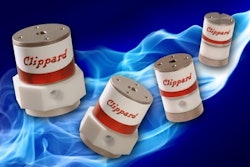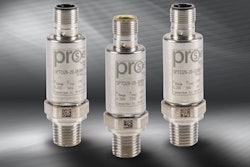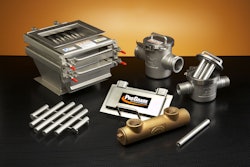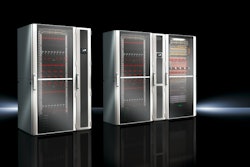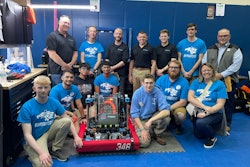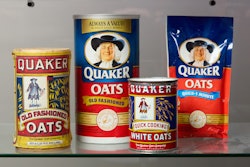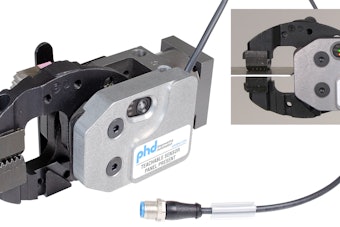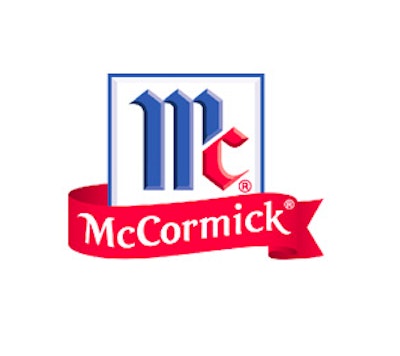
Improving the universal experience of eating is a common thread throughout the history of McCormick & Company. For more than 125 years, the Maryland-based herb and spice manufacturer has sought to perfect both the art and science of flavor. In an industry based on freshness and steadily growing product catalogs, its processing and packaging needs are anything but static. Phil Dryden, North American engineering director and Michael Okoroafor, vice president, Global Packaging Innovation, collaborated to provide a seasoned perspective to OEMs seeking to do business with this type of end user.
Phil Dryden, (left) North American engineering director, McCormick & Company;
Michael Okoroafor, (right) vice president, Global Packaging Innovation, McCormick & Company
Phil Dryden: There is so much focus on internal costs and ways to optimize our overhead. We don’t have unlimited funds for our engineering staff anymore. To be able to partner with an OEM that not only knows their equipment, but also understands our business, is a big part of what we need going forward. Some of our OEM partners proactively come in and learn what we need, and what challenges we are facing with our customers and the challenges that our customers are putting on us to always give them something unique. They want to be different in their marketplace. For our OEMs to know that and be a part of that with us is a plus.
Also, our partners know our internal challenges. For instance, McCormick runs thousands of SKUs per plant in our network. That is made up of hundreds of SKUs per line with varying packaging formats, materials, and flow characteristics. We’re always facing those types of challenges, too. I had an engineer that came to us from [a brewer that is a household name] and was more familiar with running liquids. The first time he had to install a filler, he became quickly covered in garlic powder and we both got a good laugh. He didn’t know our business in that case; but we need our OEM suppliers to know our business.
Michael Okoroafor: One of the things we ask OEMs is to approach us with the idea of driving both growth and productivity. That means that even though they are bringing us new technology platforms, they have to think about the most cost-effective way to deliver that platform. There is a frugal mindset that has really permeated the entire consumer landscape. Making sure that you’re bringing things at the price point that the consumer can afford is very important. I think if you combine that with what Phil articulated, it tells you how McCormick approaches things.
PP-OEM: Do you view processing suppliers and packaging suppliers people as an integrated idea when going out to look for new capital projects?
Dryden: Absolutely. I think when you’re executing a project, you’re bringing both of those OEMs to the table at the same time and having everybody in the room together talking about how the systems interact.
Okoroafor: We just had a situation that illustrates this dynamic. We were installing an herb grinder and our team—from start to finish—was involved from the product filling, straight through to the packaging. That’s an excellent example of our approach of processing and packaging as one concept.
PP-OEM: How do you select OEMs that you’re going to use? Do you base it off of people that you’re already comfortable with, that you’ve used in the past or are you opening it up to new suppliers?
Dryden: Generally, we like to have primary suppliers that we work with repeatedly. The goal is to find a partner that you can go back to time after time. Again, they know your business. It also helps standardize your equipment throughout your facilities, and it helps on your training and your operations groups. You do want to try to build that relationship, and you want to go back to that original OEM out of the gate. Still, you always need to keep the door open and look at what’s new out in the marketplace, get those competitive bids just to make sure everybody’s staying honest. That way, you sometimes find there are new technologies.
What we are looking for is some good history. McCormick doesn’t want to buy the first serial number of any type of equipment, (unless we’re doing some type of truly innovative product or new product offering—then we may have to be that serial number one). When you’re talking about packaging, there’s nothing earth shattering around putting a cap on a bottle, but we do want to have a strong history with the packaging machinery company. We want to know it is going to be around for a long time. McCormick invests for the long haul. We want to have the equipment around for twenty or thirty years or more. The equipment needs to be well built, and it needs to be supported over that time. We don’t look to go cheap.
When we hire, we always look to get some different thoughts from the people we bring in that may have some different experiences. They can bring their own knowledge base to the table and say, “Hey, we’ve worked with this company before,” so we get that feedback. We also deal with engineering firms that give us ideas on businesses. At the end of the day, we sit down as a team and say, “Is these someone we want to build a partnership with, and that will be here to do that with us over the long haul?”
Okoroafor: I think [McCormick] is a [best in class] company when it comes to how the different departments interact, and not just from an engineering, packaging or procurement perspective. We have very good alignment throughout the organization. We have meetings together; we’re reviewing the project together. Phil, myself, the acquisition team, and all respective teams talk about any potential issues at the early stages before it gets to execution time.
PP-OEM: Where do you find areas of friction, or pain points in dealing with OEMS?
Dryden: The biggest pain point we have now, and this is for the industry in general, is equipment lead-time. The business is changing rapidly. So, as soon as we have an idea, we want to be out in the marketplace. We need to respond faster; we need to achieve the cost savings faster. That’s the demand of the entire industry. The stock market demands quarterly results. It’s hard for a lot of our business leaders to accept that it might take six months for a [piece of equipment].
McCormick is a good-sized business, but we’re not one of the truly big boys. That being said, we want to be treated like one of the big boys that buys sixty case packers a year. Maybe if there were a way for OEMs to deliver something on those occasions that we really need it, that would be a nice feature. But in general, we really would appreciate some way to accelerate those processes all across the board.
Okoroafor: I also think there’s an underlying factor–the idea of first to market. Remember, we do not exist in isolation. There are market dynamics that sometimes have business leaders wanting to get to market first, especially when we have an exciting technology platform. We want to make sure OEMs recognize that the a standard practice of calling every project of a certain size “10 months,” or of another size “six months,” doesn’t always work for us. They have to be flexible in delivery time because, that way, they’re never at a loss to get to the market faster. We would like to see OEMs start gearing [lead times] to our mutual benefit.
Dryden: The other point is readiness to go when the equipment arrives on site. We have started to work with some of our vendors to drive the Factory Acceptance Test (FAT) so that we could bring that equipment in and on day one, hit that start button and it’s ready to go. We’ve got a long way to go through that process. I’m not sure OEMs are sold on that thought process, or feel that investment in time and money is worth it. There are occasions when there is no ability to slip on that timeline. We need that equipment to come in and start up very quickly to meet the needs of the marketplace. What can we do upfront to ensure that happens?
PP-OEM: Where do you see the most opportunity for OEMs to serve you better?
Okoroafor: I think it’s important for us to make sure the OEMs are aware of the fact that we’re looking for continuous improvement as an ongoing exercise. It’s not just, “We’re done,” and they leave. What else can they do? I think having people that are always thinking, “How do we reinvent this,” is very, very important for us.
PP-OEM: How are you incorporating the effects of the Food Safety Modernization Act into your OEM purchases?
Dryden: Anytime you have new regulations out there, they are going to impact you. The good part about McCormick is we already hold ourselves to such a high standard. They’re not making a significant change to the way we look at how we operate our engineering groups, our operations, and things like that. Yeah, there’s going to be some more T’s that need crossing, and I’s that need dotting, but, in general, it hasn’t impacted the way in which we go about our daily business here.
